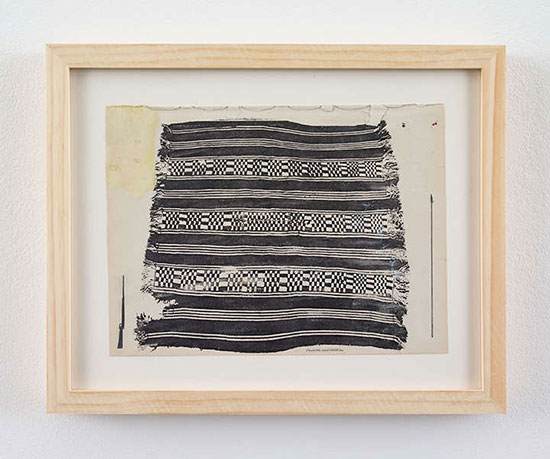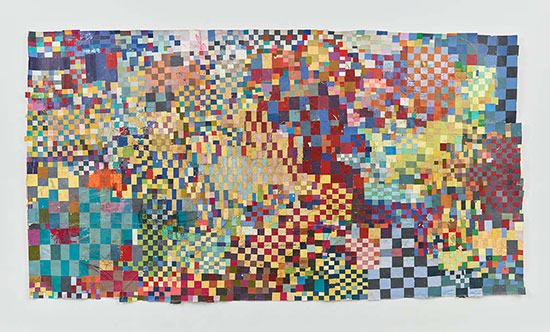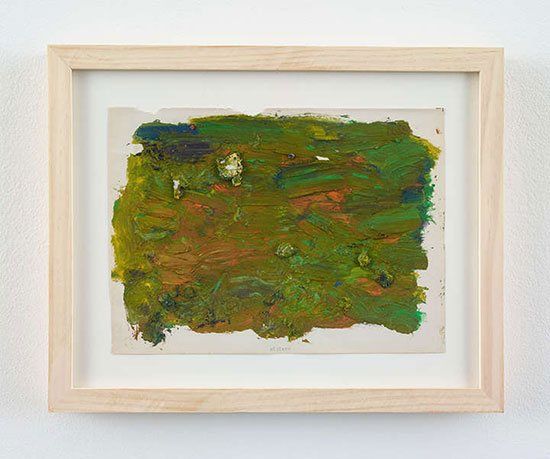William Cordova rarely stays put.
Though he's based in Miami and New York, change is a constant for this Peruvian-born artist. Since 2004, he's taken part in some 15 artist residencies in this country and Europe. Venues featuring his art in 2018 include Pérez Art Museum Miami.
"I think William's practice really represents a new type of perspective in terms of art making in the United States. He was born in Lima and he came to the U.S. when he was 8. Then he was here in Miami for most of his life until he started doing residencies and moving all around," said PAMM associate curator María Elena Ortiz. "He's very much a hybrid individual."
Ortiz spoke to me about William Cordova during an interview on August 28, 2017, at PAMM. She is organizing his April 2018 survey for PAMM, "now's the time: narratives on southern alchemy." As someone familiar with the American South as well as more southern regions like the Caribbean and Latin America, Cordova "comes from multiple lineages, multiple cultures," Ortiz said.
On view at PAMM will be Badussy (or machu pichu after dark), a film running about two minutes that's been transferred to digital video. Exploring indigenous rituals honored in Peru, it shows a woman sitting on a fence as she weaves. Distinctive sounds of Andean flute music can be heard. Explained Ortiz, it creates an "oneiric image."
Since August, Cordova's nomadic schedule includes travel to receptions for solo shows at his gallery in Lima and at Marfa Contemporary in Texas. November will find him at the opening of Prospect New Orleans, Prospect.4. As a member of the triennial's Artistic Council, he said he suggested not only visual artists but also poets, choreographers, filmmakers, musicians and performing artists to participate.
In tandem with frequent travel, Cordova makes time to mentor younger artists through studio visits and talks, with lectures planned at universities in Kansas City, Iowa City, Lincoln, and Chicago. "As I kept doing residencies, I became a lot more informed," he said. "I wanted to share that information with younger artists."
Born in Lima in 1969, Cordova moved with his family to the Miami area in 1977. The transition was tough, he remembered. It was necessary for the family to move back and forth from Lima several times. I caught up with him by phone on August 1, 2017, when he was in Greensboro, North Carolina, for an artist residency at Elsewhere.
"In Peru and Miami," he said, "we moved around so much. I was never able to make friends as much." Public school in Miami was discouraging. "I was very slow in learning anything … My grades were terrible. I failed 11th grade due to bad math class grades. The only things I ever excelled at were visual art and writing. My spelling and grammar were terrible, though," he wrote in an email.
Early on he was drawn to creative pursuits and books like Orwell's “Animal Farm.” No wonder his current calendar echoes to some extent his nomadic experience growing up. In high school he started drawing political cartoons, which he continued at Miami Dade College.
About that time Cordova put up striking anonymous posters in city buses. They presented his staged photograph of a soft drink can, painted white and seemingly bullet scarred and dripping with blood. It was paired with his angry poetry, alluding to violence he had witnessed in tough Miami neighborhoods. This public transit "guerilla action" prompted an MDC professor to nominate him for a college scholarship, he explained via email.
As time went by, Cordova's wanderlust, social consciousness, and diverse background fomented ideas for excelling as an artist with international credentials.
"For me, there is always my triple heritage, which is the 3 A's: Andean, African, Asian," he said, easily slipping into a brief discussion of the layered history of Latin America. "The Asian presence has been in Latin America since the early colonial period, with the Chinese coolie. The Japanese were coming to Peru in more the mid to late 1800s. That's why we have ceviche," he added, with an amused nod to the popularity of Peruvian ceviche restaurants in Miami.
Not surprisingly, a central theme of his work, alchemy, evokes change and transformation. "Growing up in Peru and Miami, having to be very economically resourceful," he said, spurred him to develop "a way of thinking, working, that requires a lot of transformation of resources, like reclaimed cardboard, office supplies, and using them to make visual art."
.

"elemental manifestation (mapuche)" by William Cordova, 2015–2017. Photocopy transfer and graphite on reclaimed paper, 9 x 13 inches. Image courtesy the artist and Sikkema Jenkins & Co., NY.
.
An installation commissioned by PAMM for his survey exhibition demonstrates his talent for transforming resources drawn from daily life into provocative art. The commission will be made from variously colored iron grilles and gates once created for doors in Miami homes. "It actually points to Inca construction," said Ortiz.
The maquette for this commission shows a curious labyrinth that viewers can wander through and explore in various directions. It promises to allow them to create their own performance while negotiating a path around intermittent barriers.
Cordova seems to love interacting with diverse cultural communities. He's endlessly curious about how they're created, in both the historical past and recent present.
.

"can't stop, won't stop (whipala or KRS1)" by William Cordova, 2016–17. Mixed media collage, 81 x 146 inches. Image courtesy the artist.
.
This restless curiosity feeds his art, engendering one creative opportunity after another, as documented on the website of his New York gallery, Sikkema Jenkins & Co, located in Chelsea. Since earning an MFA from Yale University in 2004, Cordova has taken part in residencies with The Studio Museum in Harlem, the Glassell School of Art with Museum of Fine Arts in Houston, the American Academy in Berlin, and many others.
These residencies offered a certain independence from the art market although they paved the way for his representation at prominent galleries: Sikkema Jenkins & Co. in New York; Livia Benavides in Lima; and Arndt in Berlin.
"Being in a residency program gives you time and space and allows you to take a lot of risk with your work," he said. "Your work evolves to a certain point where it isn't about commerce." After graduate school at Yale, "I started to get invited to do projects at museums and universities. Some of them turned out to be high-profile. Journalists started seeing my work and interviewing me," he added. "That eventually caught the interest of curators in New York and also galleries."
Cordova's art has been exhibited in cities that include Chicago, Havana, Madrid, Miami, New York, Oslo, San Francisco, and Zurich. Among the institutions holding his work in their collections are New York's Whitney Museum of American Art and Solomon R. Guggenheim Museum, Studio Museum in Harlem, Berlin's American Academy, Boston's Institute of Contemporary Art, Seattle Museum of Art, and Museo de Arte de Lima in Peru.
.

"untitled (algiers)" by William Cordova, 2015 –2017. Oil and typewriting on paper, 9 x 13 inches. Image courtesy the artist and Galeria 80M2 Livia Benavides.
.
More than for most artists, his career resists neat labels. It crosses over numerous media and professions: film, drawing, collage, photography, installation, music, writing, performance, teaching, and curating. On his resume are listed more than a dozen "curatorial projects," several in Miami.
The example set by Howardena Pindell, working as both artist and curator, inspires Cordova. "She could balance both and do it successfully," he said. Early in her career Pindell worked for 12 years at New York's Museum of Modern Art, rising to the position of Associate Curator of Prints and Illustrated Books. "It was necessary for Howardena to do that at the time because there was a lack of African American artists or just artists of color in general," he said. "She felt obligated to take on the task and create these exhibits."
Nor is he deterred by the fact that some curators and museum directors "scoff," as he puts it, at the idea of artists crossing boundaries beyond their studio to curate. "I think it says a lot more about the curators' own insecurity and limitations because they don't want to be out of a job," he added. "I think it challenges them."
Cordova thrives on challenges and crossing boundaries.
___________________________
Copyright 2017 Hamptons Art Hub LLC. All rights reserved.
